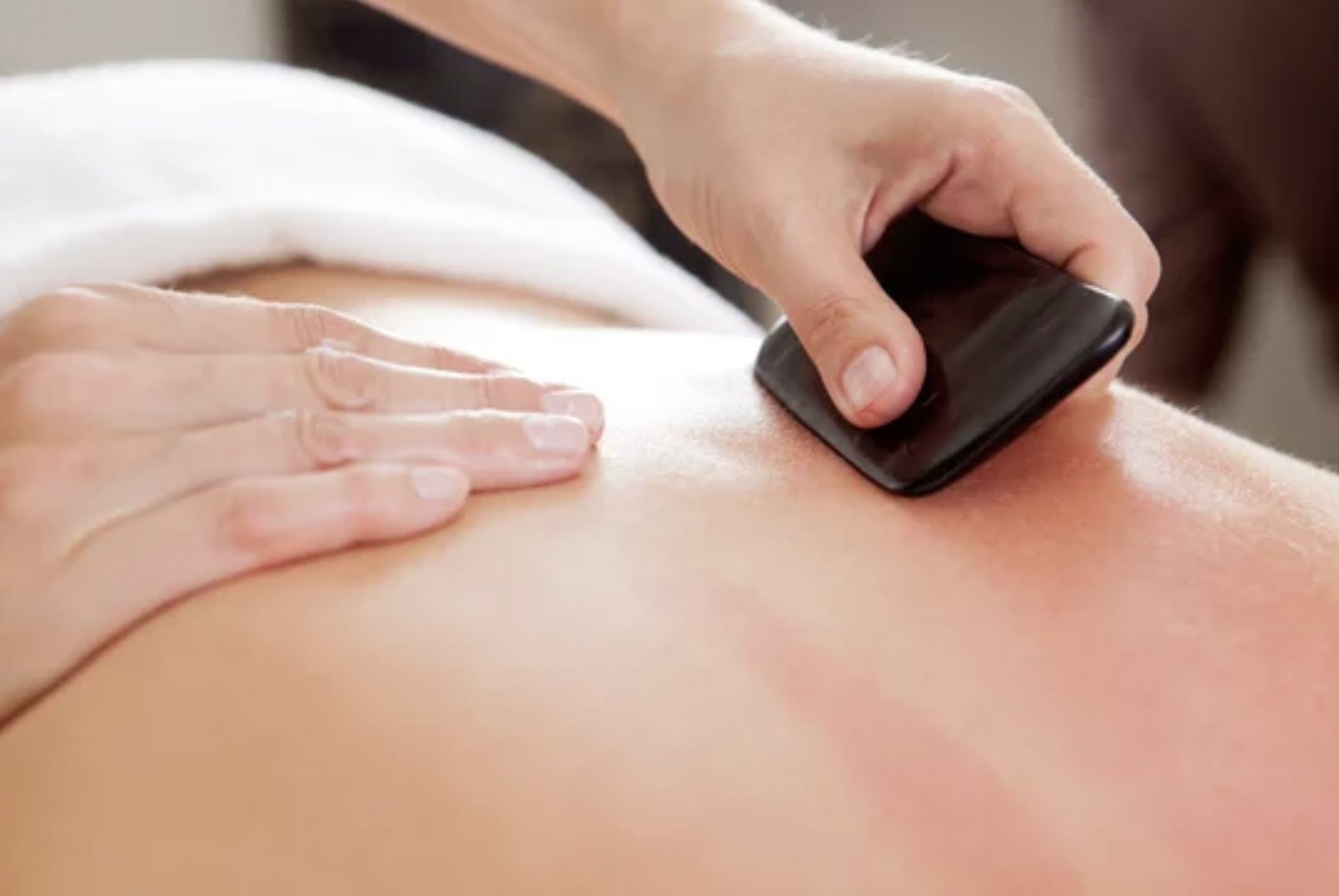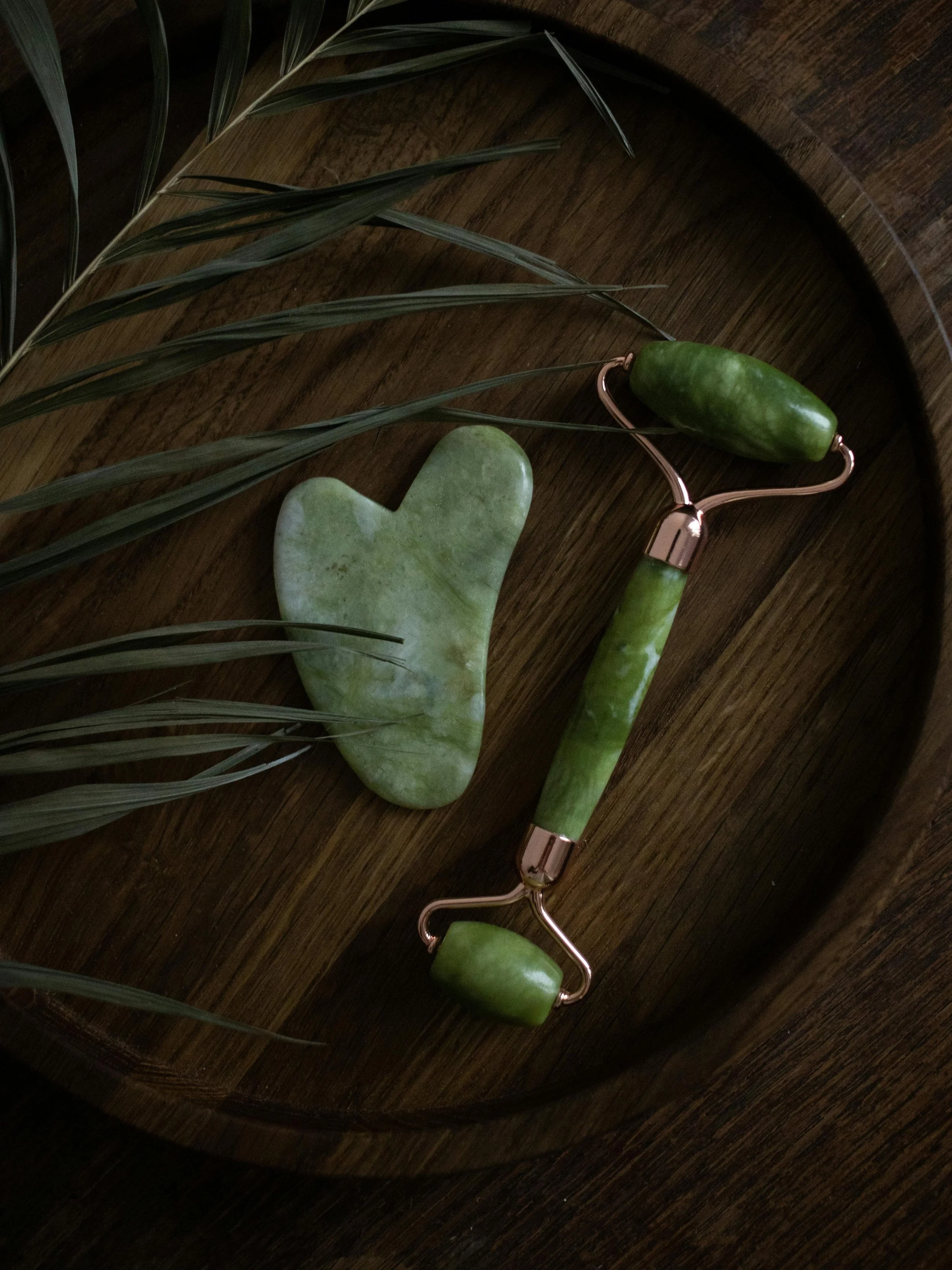Exploring Gua Sha (Scraping): A Holistic Approach to Healing and Wellness
What is Gua Sha?
Gua Sha (刮痧) is a traditional healing technique that involves using a smooth-edged tool to gently scrape the skin. The word gua means "to scrape," and sha refers to the temporary marks that can appear as stagnation is released. This technique improves circulation, relieves tension, and supports the body’s natural healing response.
Historically used to treat everything from muscle aches to colds, Gua Sha is now appreciated both for its therapeutic value and its rejuvenating effects on the skin. Tools are often made of porcelain, jade (or other stones), resin or stainless steel and are applied with moderate pressure. While redness or petechiae (small purple spots) often appear, this is a normal part of the healing response and usually fades within a few days.
The Benefits of Gua Sha
Pain reduction & Muscle Relief Gua Sha is especially helpful for areas like the neck, shoulders, and back. It releases tension and supports healing by encouraging fresh blood flow and breaking up areas of stagnation.
Improved Circulation & Recovery The technique stimulates circulation, which can reduce inflammation and help your body recover from injury or chronic discomfort.
Facial Rejuvenation When used very gently on the face, Gua Sha can support lymphatic flow, reduce puffiness, and bring a natural glow via enhancing circulation.
Calming the Nervous System Gua Sha isn’t just physical — it can also support emotional regulation by calming the nervous system and restoring the free flow of Qi.
Releasing stagnation& Supporting the body’s natural elimination pathways Gua Sha complements treatments like acupuncture and cupping and can assist in clearing stagnation and boosting immune function.
Gua Sha + Acupuncture: A Powerful Pairing
When combined with acupuncture, Gua Sha can be an excellent supportive therapy. While acupuncture works internally to balance the body’s vital energy (Qi), Gua Sha focuses more on releasing surface tension and improving physical circulation.
For example, if you’re receiving acupuncture for chronic or acute pain, Gua Sha can help to enhance the effects of acupuncture by promoting blood circulation and relieving muscle tightness. Similarly, if you’re addressing a skin concern, Gua Sha can complement facial acupuncture by stimulating the skin and encouraging the natural flow of energy.
Is Gua Sha Safe?
When performed correctly, Gua Sha is a safe practice. However, it is essential to approach it with care, especially if you have sensitive skin or certain medical conditions. It is important to avoid applying it over broken skin, infections, or active inflammation. Always inform your acupuncturist of any medical conditions or sensitivities so your treatment can be tailored to your needs.
Aftercare Instructions
Following a Gua Sha session, your skin may be more sensitive. These simple guidelines can support your recovery and maximize the benefits:
Stay Hydrated Drink plenty of water to support detoxification and circulation.
Rest & Recover Take it easy for 24–48 hours, especially if the treatment focused on muscle tension or deep tissue work.
Keep the Area Covered Wear loose, breathable clothing and protect the treated area from cold or wind. A scarf is often helpful after neck work.
Avoid Heat & Showers Skip hot showers, baths, and saunas for the first 24 hours to allow your skin to settle. The skin may be sensitive, and exposure to heat could increase irritation or prolong the redness. This allows your skin time to recover and ensures that the therapeutic effects of the treatment are not interrupted.
Gentle Skincare
If you’ve had Gua Sha on the face, avoid harsh skincare treatments immediately afterwards. Keep the skin calm by using gentle moisturizers and avoiding any active ingredients (like acids or retinol) for a day or two.
Monitor Skin Reactions
Temporary marks, often appearing as red or purple spots (petechiae), are a normal response to Gua Sha, especially when deeper pressure is applied. These marks are typically harmless and will fade within a few days as your body absorbs the released stagnation. Unlike bruising, petechiae are not caused by blood pooling in the tissues. If you experience any unusual symptoms—such as excessive pain, swelling, or persistent marks beyond a few days—please contact your practitioner for guidance.
Listen to Your Body
If you experience any discomfort or unusual reactions after your session, let your acupuncturist know. Everyone’s body responds differently, and adjustments may be needed for future treatments.
Final Thoughts
Gua Sha is a simple yet powerful tool for supporting your body’s natural healing process.
If you’d like to explore how Gua Sha can enhance your treatment or if you have any questions, don’t hesitate to discuss them with your licensed acupuncturist. Together, we can create a customized approach that addresses your unique needs and goals.
References:
College of Traditional Chinese Medicine Practitioners and Acupuncturists of Ontario. (n.d.). About traditional Chinese medicine [PDF]. https://www.ctcmpao.on.ca/resources/publications/
Lam, H. M., & Lee, T. Y. (2016). The effectiveness of Gua Sha on myofascial pain syndrome: A systematic review and meta-analysis. The Journal of Alternative and Complementary Medicine, 22(10), 826–831.
Saha, F. J., et al. (2019). Gua Sha therapy for chronic low back pain: A randomized controlled trial. Complementary Therapies in Clinical Practice, 35, 1–6.
Wikipedia contributors. (2024). Gua sha. Wikipedia. https://en.wikipedia.org/wiki/Gua_sha




